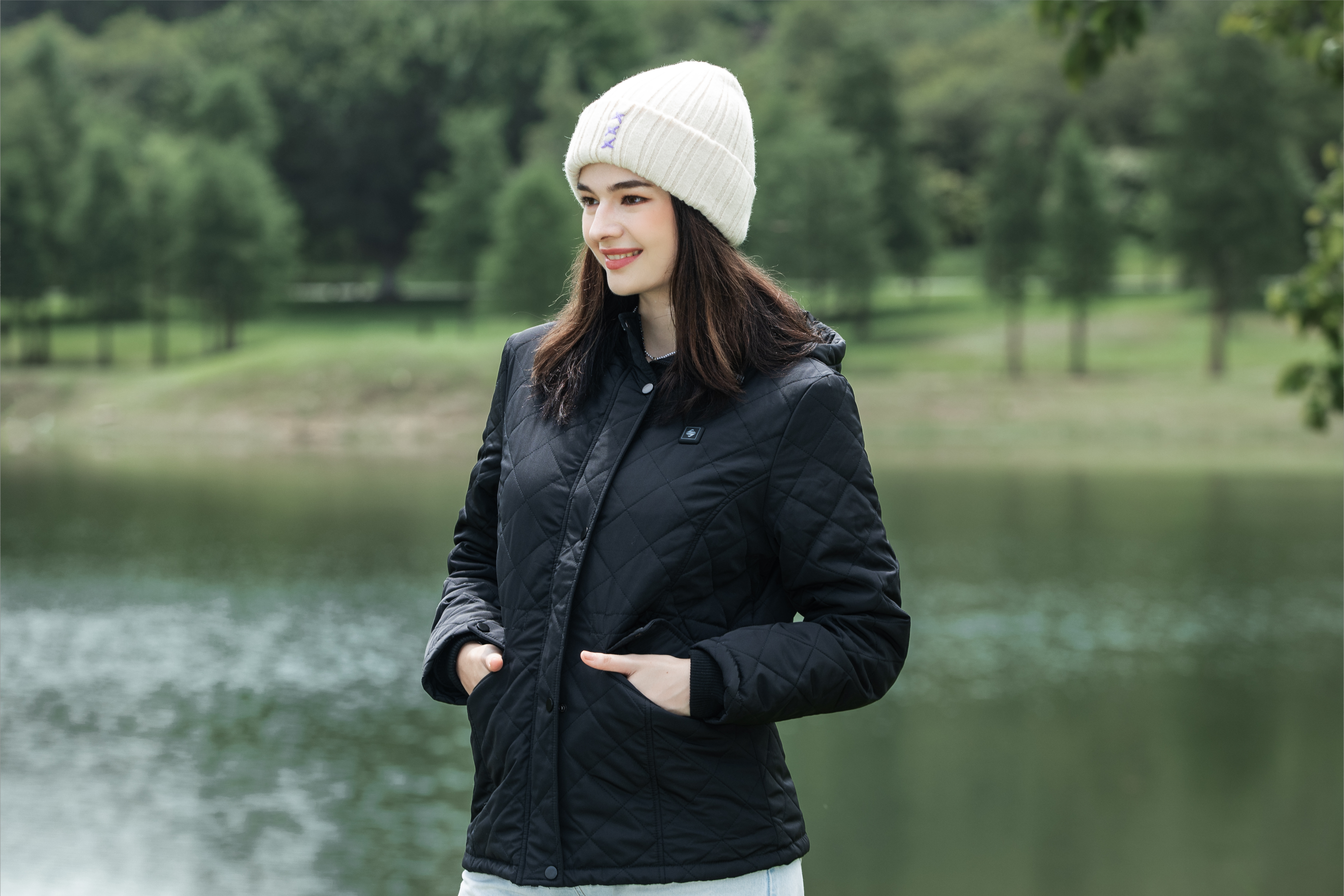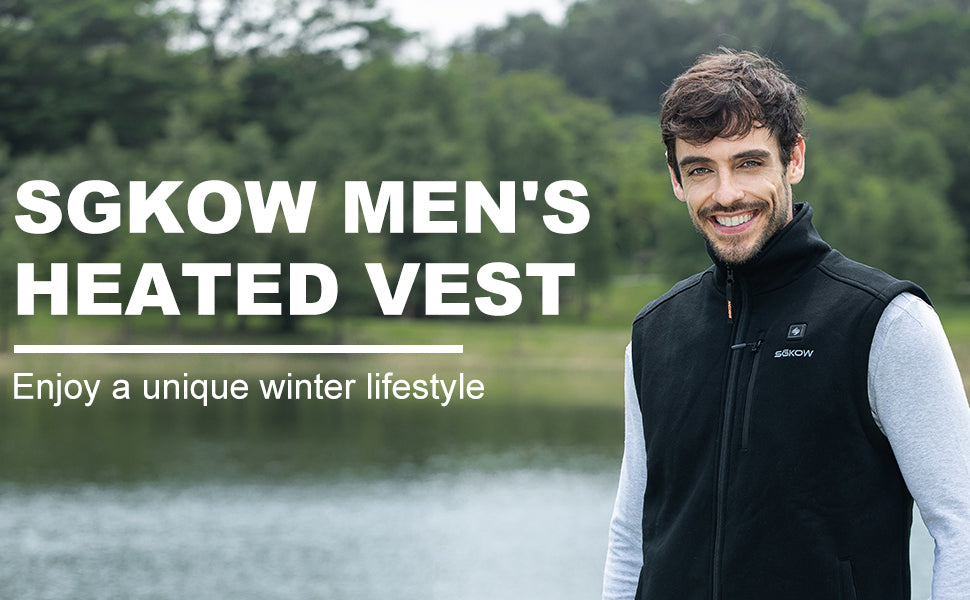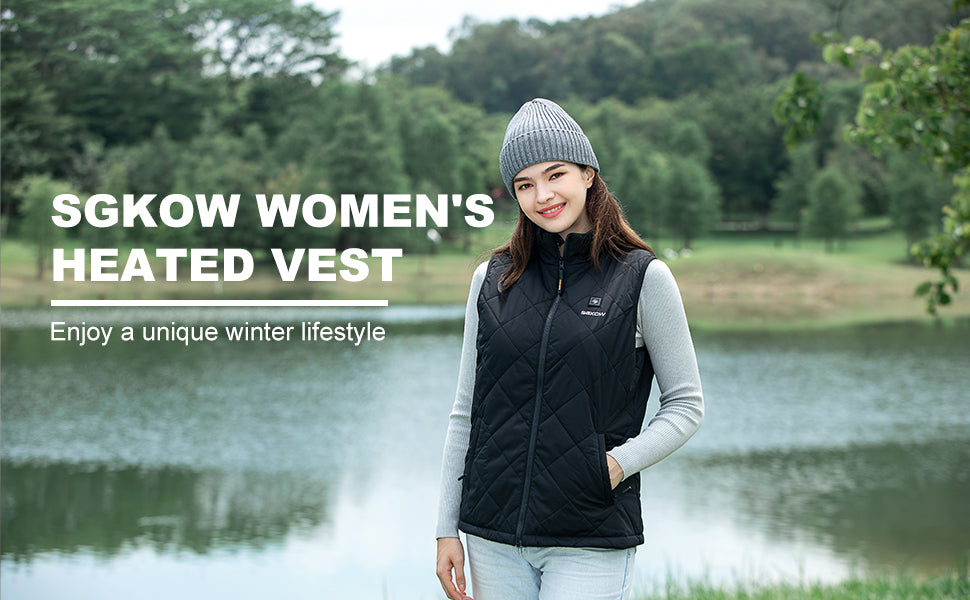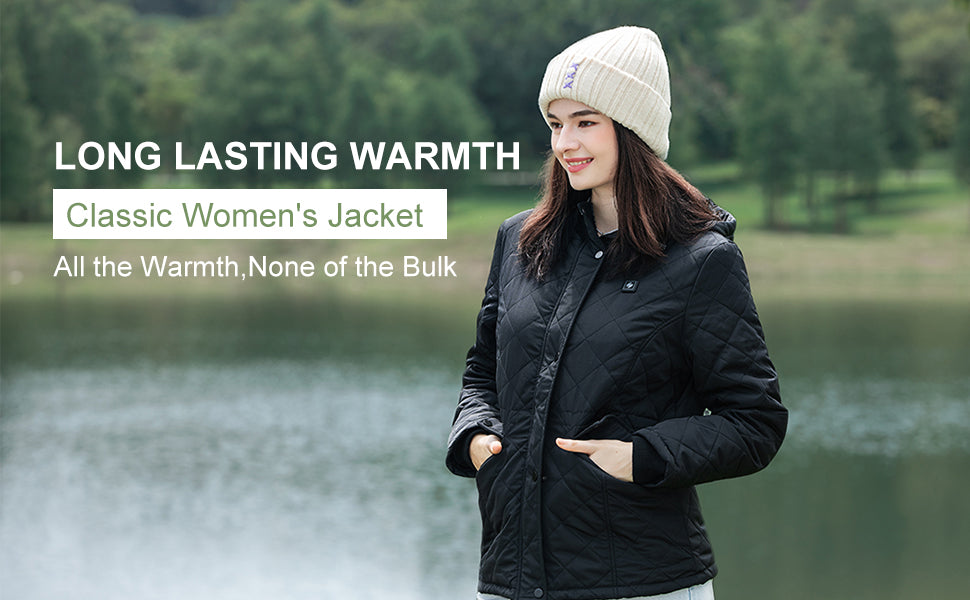Are Heated Jackets Bad For Your Health?

Safety is the priority when it comes to using heated apparel. If caution is not practiced heated clothing has been a popular choice for people living in colder regions or sports enthusiasts interested in winter activities. A sudden splurge in demand has led to many manufacturers incorporating advanced technology within heated jackets to enhance their performance.
However, with modern technology comes its drawbacks, which can be many. If the heated jacket is not purchased from a reliable manufacturer, Certain safety standards and protection mechanisms need to be applied to facilitate the safe use of heated jackets.
SGKOW excels in this regard, as their heated apparel is not only top-notch quality but also complies with safety regulations. The firm integrated a set of protection mechanisms, such as EMF shielding, to decrease health risks. Apart from these, heated jackets are generally safe to use.
To fully understand the health-related aspects of a heated jacket, we have created an in-depth article for our readers' convenience below.
Understanding heated jackets
Working Principle
Built-in heating elements are the primary source of spreading heat within the jacket. Electrical flow through these small wires of heating components generates the required warmth. An electric current from the connected rechargeable battery pack aids it. Converting electrical energy into heat is its basic working principle.
After the user turns the heated jacket on, the battery gradually supplies a steady electric current to the heating elements. These resist the flow of electrons, and as a result, heat is generated. The heat created as a result radiates outward. It uniformly distributes in the jacket, providing heat throughout it. It warms up the surrounding area, providing heat to the user for hours.
Electric Components
Talking about the heating elements in a jacket, there are several types, which are elaborated as follows:
Carbon-fiber Heating Components
- High electrical conductivity is a unique property of carbon fiber wires. These are thin and flexible, and they can be molded as required.
- These are generally easily sewn into the heated jacket fabric due to their adaptable nature.
- They heat up more quickly than any other element and are the preferred choice. SGKOW’s Classic Heated Jackettypically has carbon-fiber heating elements in the jacket. It offers heated jackets women and heated jacket men.
Resistive Heating Components
- Nickel and chromium alloys have high electrical resistance and are the other types of electrical components used in some heated jackets.
- These are common but are not as lightweight as carbon fiber.
Heat Generation Mechanisms
There are a few mechanisms used for heat generation in a heated jacket, depending on the material used within. We have discussed a few below.
Electrical Resistance Heating
As mentioned earlier, these resist the flow of electrons when an electric current passes through nickel or chromium. The generated heat is then passed on to the surrounding fabric for extended warmth.
Carbon Fiber Heating
In this way, the electric current gradually flows through the carbon fiber wires in the jacket. It is transferred to the fabric of the jacket in the form of heat and makes use of the conductive properties of carbon fiber.
Graphene Heating
It utilizes a material of high conductivity called graphene. It is arranged in the form of a single layer of atoms, due to which heat dissipation is easier. Furthermore, it makes the distribution of heat streamlined and proper throughout the jacket.
Types of Heated Jackets
The market is saturated with several kinds of heated jackets, depending on material style and power sources.
Battery-operated Heated Jackets
- These jackets have a rechargeable battery pack that powers all the style features.
- These are portable and versatile.
- This is the most popular kind of jacket used, and its battery life depends on the condition and lifespan of the battery.
Heavy-Duty Heated Jackets
- Insulation is optimal in these sorts of jackets, and they are made for subzero temperatures.
- High-powered battery packs and durable fabric are used.
- Water resistance is another quality seen in these sorts of jackets to combat extreme winds and moisture and avoid hypothermia.
USB-powered Heated Jackets
- These require a power source connection, and generally, fast-charging power banks are connected to the electrical current.
- SGKOW employs this technology with their high-tech lithium-ion battery packs, which can be charged with their premium GaN chargers.
- These are ideal for long-term usage and portability.
Soft-shell Heated Jackets
- For fall and winter activities like skiing, snowboarding, etc., soft-shell heated jackets are ideal.
- These are made of breathable materials such as fleece or cotton in their inner lining. These have moisture-wicking properties and are a premium kind for everyday use.
Potential Health Benefits
- For people suffering from blood circulation disorders such as Raynaud’s disease, heated jackets provide the optimum warmth for increased circulation.
- It has therapeutic effects, such as reducing muscle soreness and stiffness. It increases mobility with muscle relaxation.
- A heated jacket reduces the risk of hypothermia in case the temperature drops below zero. It offers extended warmth for the individual wearing it.
- It works effectively for patients suffering from arthritis and fibromyalgia.
- A heated jacket provides uninterrupted warmth, which is a great mood booster and significantly reduces stress levels in an individual. This has a positive impact on a person’s mental well-being.
- Enhanced sleep quality is another health benefit of a heated jacket.
Health Concerns and Risks
Along with many advantages, heated jackets also pose a few risks that can cause harm to a person’s health if not taken seriously.
Exposure to Electromagnetic Fields (EMF)
EMFs of low intensity are generally generated by heated jackets. X-ray and gamma rays are ionizing, which makes these EMFs of low range on the radiation spectrum. These are considered safe as a result. These pose minimal health risks.
However, electromagnetic sensitivity (EHS) is a condition that is common and exists in some people. Prolonged exposure and usage of a heated jacket can cause conditions like headaches and nausea in the user. Safety measures such as EMF shielding are implemented in some jackets, such as the ones from SGKOW. It can avoid a lot of potential risks.
Risks of Burns and Overheating
A common risk associated with heated jackets is overheating and burns. High heat settings for longer periods with constant usage can cause this. Burns from heated vests may also result from improper use or inadequate insulation of the heating sources.
Blisters and other skin irritations, or even more severe injuries, might develop. If any of the heating components or the battery pack are damaged or leaking, the vest should not be used.
Use the heated jacket on the lowest setting if you have to utilize it for more hours. Adjust the temperature on the thermostat accordingly, and remove the jacket in case of symptoms of heat exhaustion.
Allergic reactions and skin sensitivities
Always look If the jacket is made up of hypoallergenic material to avoid any skin allergies, Cotton is the ideal material for this. The length of a heated jacket increases the risk of skin sensitivity and skin irritation in some individuals. Heat exposure from the jacket can cause conditions like eczema, dermatitis, inflammation, and rashes.
Sweat accumulation and friction are also possible factors that can cause folliculitis, redness, itching, and other symptoms related to the skin. Try to wear an inner layer of clothing like a t-shirt to avoid the jacket being directly in contact with the skin. This can reduce its effects to an extent.
Expert Opinions and Studies
Most medical experts believe that wearing a heated jacket is a reasonable approach to keeping warm, but they warn against using it improperly.
Expert Opinions
- Mayo Clinic family doctor Dr. Jonathan Cluett advises, "Heated jackets can be a helpful device for people who spend time outdoors in cold weather, but it is important to use them in moderation and to be aware of the potential risks."
- University of Miami dermatologist Dr. David Greuner stresses the significance of skin health while utilizing heated jackets. "Heated jackets can cause skin irritation or burns if used incorrectly," according to him. The jacket should not be worn too tightly; the temperature should be set low; and breaks should be taken if the user feels uncomfortable.
Case Studies
- One study looked at whether heated jackets may affect the functionality of medical equipment like pacemakers and insulin pumps. Some heated jackets were discovered to produce electromagnetic fields (EMF). These might potentially disrupt the operation of electronic gadgets, according to the research. The study authors urged people with implanted medical devices to check with their physicians before trying out heated jackets.
- Research on whether heated jackets may cause skin irritation and burns was published in the Journal of the American Academy of Dermatology. According to the research, heated jackets do have the potential to irritate the skin, especially for those with sensitive skin. According to the study's findings, heated jackets should be used with care, and prolonged usage or high-heat settings should be avoided.
Best Practices for Using Heated Jackets
- Follow the manufacturer’s guidelines for the usage and storage of heated jackets properly.
- Ensure the complete charge of a heated jacket batterybefore using it.
- Wear the heated jacket in the lowest setting, if possible, to reduce EMF exposure and heat exhaustion.
- Avoid more than 8 hours of using a heated jacket.
- Try to take off the heated jacket every few hours to let the skin breathe for a while.
- Ensure that you take off the heated jacket before sleeping, as it can be harmful.
- Clean the heated jacket on a low cycle in the washing machine with a mild detergent.
- Do not use a heated jacket. If it's connected to a power source,
- Make sure that the heated jacket battery packis not leaking or has any cracks before wearing the jacket. This can cause the chemicals to ooze out and burn the skin.
- Keep the battery from being overcharged, as it can lead to fires and explosions along with draining its battery life.
Conclusion
Due to their eminence and several therapeutic effects, heated jackets are purchased by numerous users worldwide. But along with many benefits, it can also pose a few potential health risks, such as skin allergies, EMF exposure, and skin burns and rashes. These can, however, be avoided if proper instructions are followed and prolonged usage is stopped. Battery-operated heated jackets are the optimum for all users who are living or working in freezing weather. All in all, heated jackets are safe for your health if used properly. We hope this article was of maximum help to you.





















Leave a comment